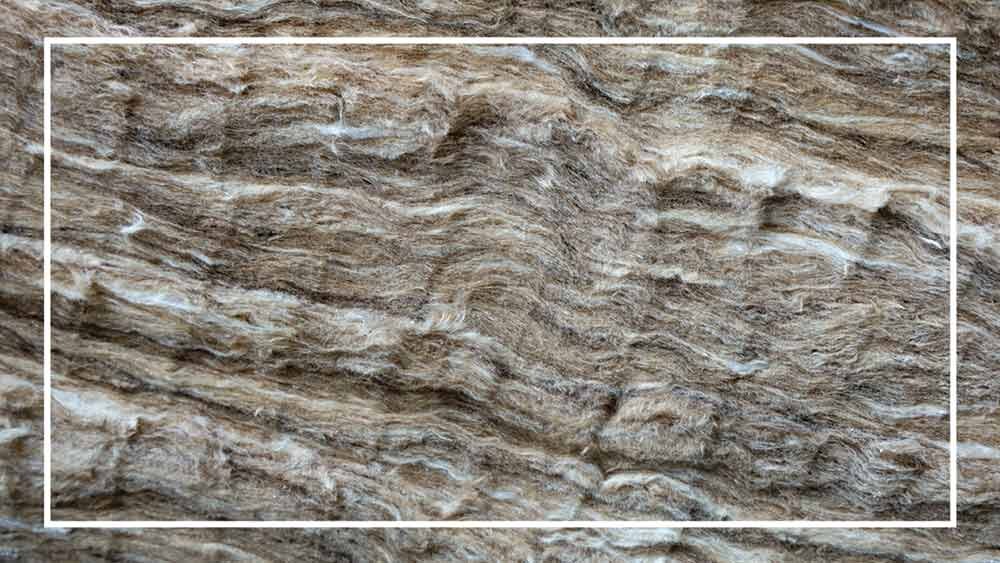DIY or call insulation contractors?
Air sealing and insulation are two of the most cost-effective ways to make your home warmer in the winter and cooler in the summer. The average homeowner in Oregon will save 17% on heating and cooling costs by sealing air leaks and adding insulation (ENERGY STAR).
Have you thought about rolling up your sleeves and sealing air leaks or adding home insulation yourself? If so, this article is for you. We'll cover best practices for basic air sealing and installing attic insulation. You’ll find resources like a break down of cash incentives and a step-by-step guide as well as recommendations for when it makes sense to call insulation contractors in Portland or in Bend, Oregon.
JUMP TO A SECTION:
DIY air sealing and insulation
START ON THE RIGHT FOOT
Find a guide: Check out ENERGY STAR’s Do-It-Yourself Guide to Sealing and Insulating.
Get pre-approved for cash incentives: Visit energytrust.org to learn more about incentives for DIY air sealing and insulation. If you’re sealing air leaks and insulating a 1,000 square foot attic, you could get $250 or $500 if it’s for your rental property. Pre-approval is required!
make sure you have the time and expertise
Basic air sealing
Time: 1 day
Expertise: Beginner / Moderate
Notes: A great place to start!
Attic Insulation
Time: 1-2 days
Expertise: Moderate/Expert
Notes: If the floor of your attic has little or no insulation, consider buying loose fill insulation and installing with a rented blow machine after sealing air leaks.
Floor Insulation
Time: 2-3 days
Expertise: Moderate
Notes: With the right tools, adding floor insulation is easier to get right than attic insulation. But it’s important to know that the work itself is more physically demanding.
Wall Insulation
Time: 3-4 days
Expertise: Expert
Notes: It is very difficult to properly insulate walls. You’re better off hiring an insulation contractor.
When to call insulation contractors
KNOW WHEN TO ASK FOR HELP
If you encounter any of the following, you should call a professional.
Damp or wet insulation: You likely have a leaky roof.
Attic rafters or floor joists with either rot or mold: You have an issue with moisture.
Vents from your kitchen, bathroom, or dryer that exhaust into your attic: Your vents should direct air outdoors and will cause moisture damage if left to exhaust into your attic.
Consistent ice dams in the winter: Indicates that you have serious air leakage.
No or minimal attic ventilation: Again, moisture is the concern.
Knob and tube wiring: Applies to pre-1930 homes. Knob and tube wiring can be a serious fire hazard if it comes into contact with insulation.
Unsealed and uninsulated recessed "can" lights: You’ll want to take special care to reduce the risk of a fire in your home.
What would it cost to hire an insulation contractor?
Here’s a range of what it costs to insulate a typical attic in Portland or Bend, Oregon. It’s worth reflecting that these costs do not include the expected energy savings that result from the project.
Square footage: 800-2,400
Installation cost: $2,500 - $6,500
Net cost (minus incentives): $2,300 - $4,875
Estimated monthly loan payments: $25 - $60 a month
HOW TO ASK FOR HELP
If you’d like a consultation for air sealing or insulation in Portland or Bend, Oregon, please give us a call at 503.223.8767 or schedule an appointment online. You’ll get a get an overview of costs, cash incentives, and available tax credits.
Since 2007, we’ve helped our clients complete hundreds of air sealing and insulation projects and get back more than $200,000 in cash incentives from the Energy Trust of Oregon. We’re happy to help with your home.
How to seal air leaks in your home
What is air sealing and why does it matter?
Most people know that insulation makes your home more comfortable. It slows the movement of heat through surfaces in your home like the walls and roof. But insulation does not necessarily block the movement of air, especially when you have cracks, holes, or gaps in your home.
Adding insulation is like putting on a down jacket on a cold winter day - you will definitely feel warmer. But a down jacket does not really block the wind. For that, you need a windbreaker.
Air sealing is like putting on a windbreaker.
When you have air leaks in your home, you’re bound to feel drafts and make your HVAC system work harder than it needs to. You’ll also get more moisture in your home that can cause mold damage and potentially make you sick. Air sealing is the solution.
What to know about sealing air leaks
Here are some of the main things you should know about how to seal air leaks in your home.
Focus your attention: Some areas are easier to access and tend to have bigger gaps.
Start by focusing on plumbing penetrations. For example, we often find gaps under sinks on exterior walls.
You’ll also want to pay attention to your sill plate and rim joist (where your house sits on the foundation). Seal the entire length of your sill plate and every penetration in your rim joist like your dryer vent and cable connection. Especially if you have an open, unfinished basement, you’ll find this project very doable.
Finally, add a door sweep and weatherstripping to your front or back door to get a big reduction in air movement with only a small investment of time.
Gear up: We recommend wearing disposable clothes, gloves, and a double-elastic mask or half-face respirator. To actually seal air leaks, your best bet will be canned spray foam insulation, which you can buy from Home Depot (like this). Depending on the size of the gaps you’re filling, you could get spray foam with lower or higher expansion, but the standard will probably work.
How to install attic insulation
Attic insulation and air sealing
So far, we’ve been writing mostly about home air sealing in general, but let’s focus in particular on the attic, since that’s where we typically find the biggest opportunities. Your attic is also a good place to focus because it’s probably easier to access than other areas of your home, like closed wall cavities. That means you can see where to seal air leaks and add insulation without any fancy equipment.
Do YOU have enough attic insulation?
If you notice any of the following, you’re probably a good candidate for attic insulation:
Drafty rooms
Uneven temperatures between rooms or floors of your home
High heating or cooling bills
Looking across the floor of your attic, you should see a continuous layer of insulation between 16 and 18 inches deep. This indicates that your attic is insulated to R-50, as recommended by the U.S. Department of Energy. Here’s how to measure your attic insulation.
How Much Insulation in Attic
seal air leaks BEFORE INSULATING YOUR attic
Look for areas of dirty or discolored insulation. This indicates a significant air leak. In your attic, you’re likely to find air leaks around plumbing penetrations, recessed lights, and electrical boxes. Here are three videos that cover the basics for air sealing these three areas.
Air Sealing Attic Plumbing Pipes
Air Sealing Recessed Lights
Air Sealing Attic Electrical Boxes
Look out for vermiculite insulation
Some attics have vermiculite insulation, which could contain asbestos. Vermiculite looks like a lightweight, pea-size, flaky gray mineral. DO NOT disturb vermiculite insulation. Give us a call: 503.223.8767.
If you have vermiculite insulation, you can get up to $4,125 to remove it and install new attic insulation. The process looks like this:
A GreenSavers team member takes a sample of the vermiculite insulation.
We send the sample to get tested. Results typically come back within a month. If the sample matches vermiculite from a particular mine, you can get up to $4,125 from ZAI Trust to safely remove the vermiculite and re-insulate your attic.
GreenSavers coordinates the vermiculite removal and handles the paperwork for ZAI Trust. Payment typically takes 6-months.
Installing attic insulation
For a solid step-by-step guide, check out ENERGY STAR’s Do-It-Yourself Guide to Sealing and Insulating.
We won’t review each of the steps here, but we’ll call out a few pointers you should know before starting an attic insulation project.
Does it make sense to add insulation yourself? Especially if your attic is smaller and straightforward, it makes sense to add insulation yourself. Of course you’ll want to check for vermiculite and other conditions that typically require insulation contractors.
What insulation material should you use? Here at GreenSavers, we primarily install loose fill cellulose insulation. We recommend the brand Greenfiber, which performs well, contains 85% post consumer recycled paper, and excludes unhealthy substances like formaldehyde.
Opinions vary, but if you have either fiberglass or cellulose insulation in your attic, we recommend installing new insulation that matches what you currently have. You do not want to compress your existing insulation. Installing cellulose on top of fiberglass will weigh down the fiberglass, reducing its R-value.
Renting a blow machine: If you choose to go with loose fill cellulose or fiberglass insulation, you’ll need a blow machine to complete the installation. Renting a blow machine from Home Depot typically costs about $100 a day. PRO TIP: Home Depot will give you a free one-day rental for a blow machine if you buy 20 bags of cellulose or 10 bags of fiberglass.
Consider ventilation: At first, it may seem odd to add insulation, then purposely ventilate the attic to let in cold air during the winter and hot air during the summer. But proper ventilation is essential. For example, in the summer, natural airflow in a well-vented attic moves super-heated air out of the attic to protect roof shingles and remove moisture. The insulation resists heat transfer into the house.
The biggest mistake DIYer make is to block airflow at the eaves. Don’t cover attic soffit vents with insulation. You’ll want to use rater vents and soffit vents to keep air moving.
Got questions about air sealing or insulation? Feel free to call anytime in Portland (503.223.8767) or Bend (541.330.8767). We’ve completed hundreds of air sealing and insulation projects and Bend, Oregon since 2007.
Learn More about Home Insulation
Start by visiting our insulation resource pages for homeowners in Portland or Bend, Oregon. You can also keep reading our latest blog articles about insulation and hiring insulation contractors.












